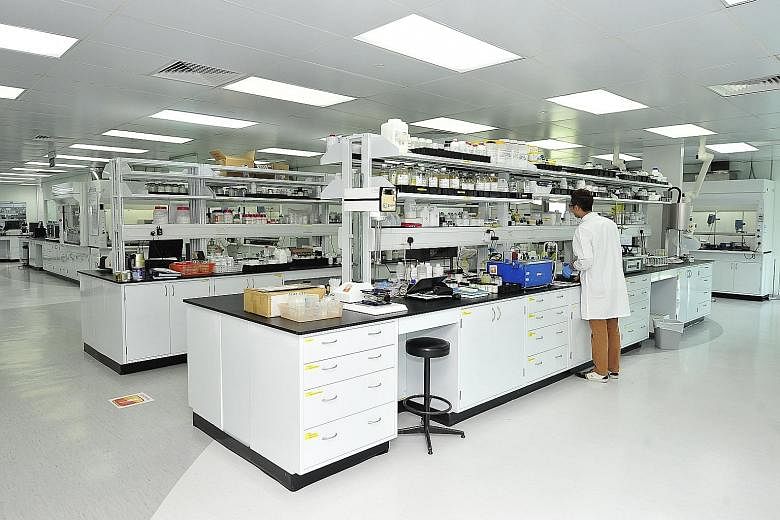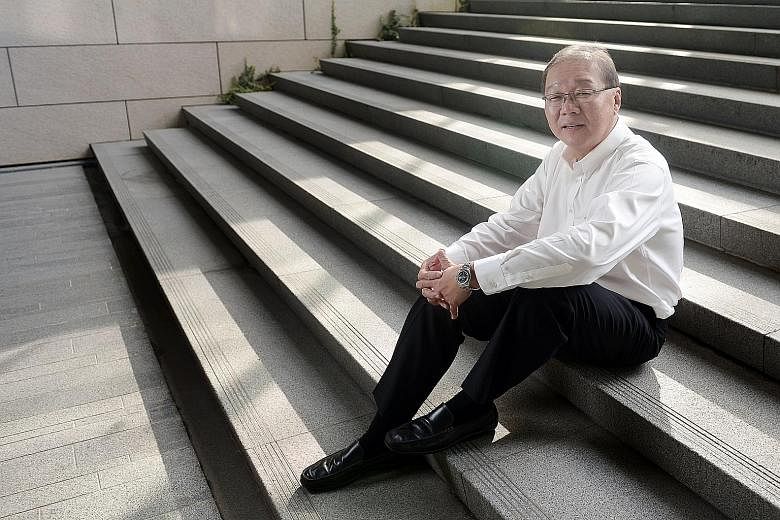The billions of dollars pumped into research and development (R&D) here have borne fruit in the past five years, creating thousands of jobs and propelling Singapore to world-leader status in areas ranging from water treatment to stomach cancer.
But more needs to be done, in particular, taking inventions to market and ramping up private sector investment in research, said the agency charting the nation's R&D plans.
Giving its report card on research, innovation and enterprise efforts in the last five years, the National Research Foundation (NRF) said yesterday that Singapore has become a global R&D hub with cutting-edge research and the ability to attract top international partnerships, among others.
"We have much to be proud about," said NRF chief Low Teck Seng. Between 2011 and 2015, the Government pumped a record $16.1 billion into research. Funding for the next five-year tranche under the Research, Innovation and Enterprise Plan will be unveiled next month.
Professor Low singled out research in water technologies and gastric cancer as areas where the country had excelled. In water research, for instance, the country has become a test-bed for firms worldwide to demonstrate and commercialise their technologies.
-
EXPENDITURE BY THE PRIVATE SECTOR ON R&D
Business expenditure on R&D increased from $4.6b in 2011 to over $5b last year.
-
TALENT DEVELOPMENT
A*Star has supported the training of over 1,400 Singaporean PhDs and post-doctorates through its scholarships and fellowships. Biopolis and Fusionopolis campuses host 16,000 scientists, researchers and innovators from the private and public sectors.
-
PATENTS
In FY 2011 -2013, A*Star generated 292 patents per billion of spending on R&D. This placed it well above education institutions like Harvard and the Massachusetts Institute of Technology.
SOURCE CREDIT: AUTM FY13 LICENSING REPORT, A*STAR
Professor Raj Thampuran, managing director of the Agency for Science, Technology and Research (A*Star), noted that growth in the R&D sector here is in high gear compared to other research-intensive economies such as Denmark and Sweden. "These are countries that have invested in science and technology for almost a century. Our efforts can be traced to about 25 years… so we are on an accelerated pace," he said.
The growing reputations of local universities - the National University of Singapore (NUS) and Nanyang Technological University (NTU) - are another visible result of the five-year effort, added Ms Lee May Gee, executive director of Academic Research (Covering) and director of Higher Education Policy at the Ministry of Education.
Despite some good outcomes, however, private sector research spending had fallen short of its goal of hitting 2.5 per cent of the country's gross domestic product this year, partly because firms have been more cautious about spending, said Prof Low.
The challenge is in turning patents and knowledge from the universities and institutes into economic impact and solutions for national issues, he said.



